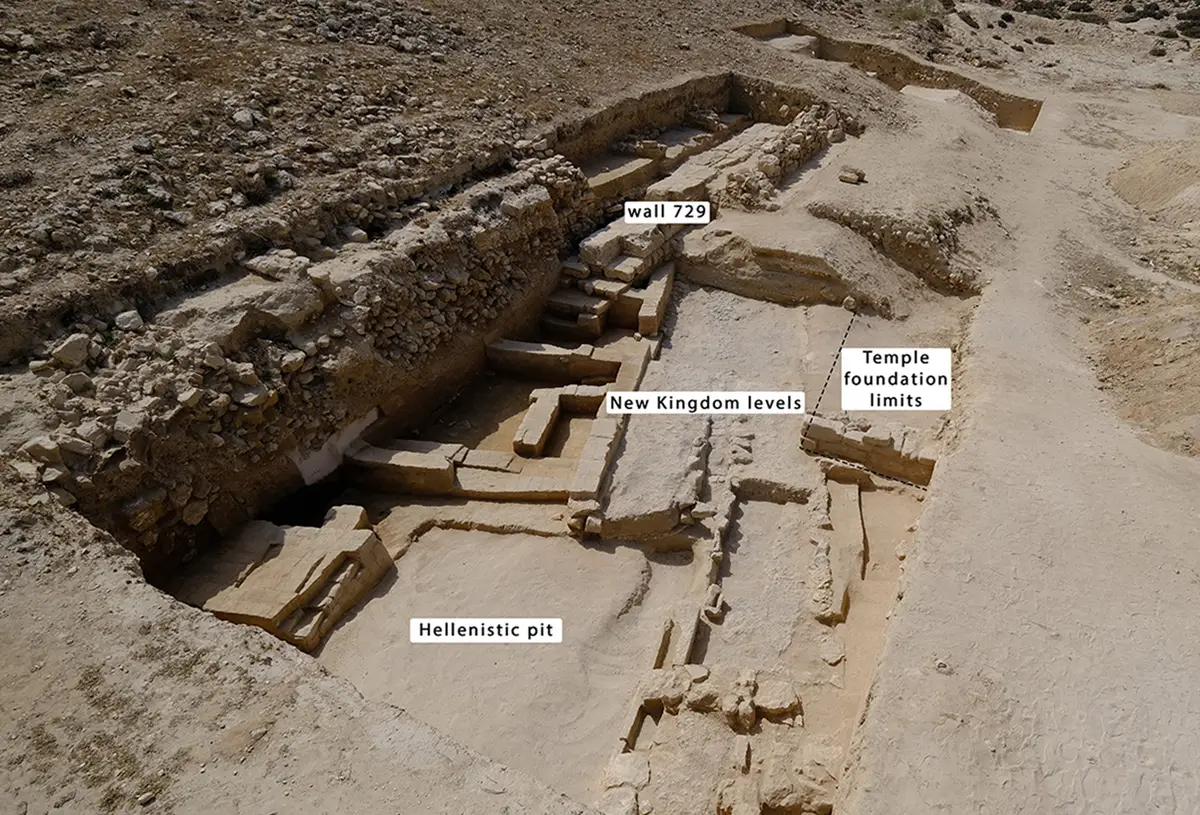Archaeologists excavating at Kom el-Nugus west of Alexandria have discovered the remains of a New Kingdom settlement.
Kom el-Nugus is situated on a ridge surrounded by modern developments between the Mediterranean Sea and Lake Mariout. The eastern part of the site is marked by a large horseshoe-shaped mound, or “kom,” while a Hellenistic necropolis occupies the western end.
While previous investigations focused on the Hellenistic structures, a recent study in the centre of the mound has revealed a settlement constructed with mudbrick that dates to Egypt’s New Kingdom Period (1500–1069 BC).
According to a study published in the journal Antiquity, archaeologists have found well-preserved houses, traces of streets, and a sophisticated water drainage system—suggesting a thriving, organised community.
The settlement underwent multiple construction phases, suggesting that it was occupied seasonally as a military outpost or temporary settlement.
Archaeologists have also uncovered fragments of monuments attributed to pharaohs such as Ramses II and Seti II, along with an amphora stamp inscribed with the name of Merytaton, daughter of Akhenaten and Nefertiti.
During the Hellenistic period, a large temple and surrounding enclosure wall were constructed on the earlier remains, repurposing or dismantling much of the older settlement. Much of the Hellenistic architecture was dismantled at some point during the Roman Imperial Era.
With excavations ongoing, archaeologists hope to discover the original name of the settlement and further explore its role in the broader history of Egypt’s Mediterranean coast.
“The discovery marks a significant step in understanding the continuity of habitation and shifting cultural landscapes in this historically rich region,” said the study authors.
Header Image Credit : S. Dhennin
Sources : Antiquity – https://doi.org/10.15184/aqy.2024.230





